While bass anglers and trolling aficionados often prefer baitcasting reels, and most kid-friendly rod and reel combos feature a spincasting reel, spinning reels are undoubtedly the most popular option for most fishermen and fisherwomen.
This is probably due in part to the simplicity of open face fishing reels which allow anglers to fish while experiencing relatively few technical problems.
As long as you start with a properly strung reel and exercise a little care, you aren’t likely to deal with many tangles or backlashes.
Spinning reels also work for catching a wide variety of fish — whether you target 50-pound muskies or 2-pound rainbow trout, there is one for you.
But as with every other piece of fishing gear, you need to understand the differences between the various models and brands on the market and choose one that suits your needs best.
If you aren’t interested in learning about the subtle differences among different spinning reels and just prefers a recommendation for your circumstances, look no further. Below are 13 different reels which excel in different freshwater situations.
The 13 Top Freshwater Spinning Reels of 2021: Outdoor Empire Reviews
These are our top recommendations for freshwater spinning reels of 2021:
- Best for the money: Pflueger Supreme XT
- Best lightweight: OKUMA Ceymar
- Best cheap reel: Pflueger President
- Best on the market: Shimano Stella
- Best bass: Shimano Stradic CI4+
- Best under $100: Shimano Spirex 1000FG
- Best catfish: PENN Spinfisher VI Live Liner
- Most expensive: Shimano Stella STL 30000 SWB
- Best for long casts: PENN Spinfisher VI Long Cast
- Best for Crankbaits: PENN BTLII6000 Battle II
Looking for a specific feature? Check out our quick-reference chart below:
| Best cheap | Best for the money | Best on the market | |
|---|---|---|---|
| Product |  | 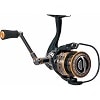 | 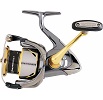 |
| Reel Model | 6920 | SUPXTSP30X | STLC3000XGFJ |
| Braid Capacity (yds/ lb test) | 125/6 | 190/8 | 200/10 |
| Mono Capacity (yds/ lb test) | 100/4 | 130/8 | 140/10 |
| Gear Ratio | 5.2:1 | 6.2:1 | 6.4:1 |
| Bearings | 6+1 | 10 | 12+1 |
| Max Drag | 8 lbs | 10 lbs | 20 lbs |
| Line Retrieve | 20.7 in/turn | 31.8 in/turn | 37 in/turn |
| Reel Weight | 5.9 oz | 6.8 oz | 7.4 oz |
| Cost | Check Price | Check Price | Check Price |
1. Best Spinning Reel for the Money: Pflueger Supreme XT
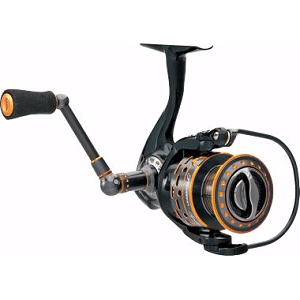
And you get quite a bit of bang for your fishing gear buck, thanks to the high-quality features built into the reel.
There are four different models in the series:
- SUPXTSP25X – features a 5.2:1 gear ratio, a 22.8-inch retrieve rate and weighs only 6 ounces.
- SUPXTSP30X – has a 6.2:1 gear ratio, a 31.8-inch retrieve rate and weighs in at 6.8 ounces.
- SUPXTSP35X – has a 6.2:1 gear ratio, but retrieves 33.8 inches per handle turn and weighs 8 ounces.
- SUPXTSP40X – features the same 6.2:1 gear ratio, a 38.6-inch retrieve rate and weighs 8.7 ounces.
As you can see, each of these models are very light. They are the lightest reels in their respective classes according to Pflueger. They help you avoid fatigue while fishing all day long.
They also feature carbon fiber handles which are 21 percent lighter than similar handles built from aluminum.
Just because they’re light doesn’t mean they are flimsy or cheap. The body, rotor, and spider plate are made from magnesium and the spool is braid-ready. Each model features a sealed drag system and 10 silky-smooth, stainless-steel ball bearings.
2. Best Lightweight Spinning Reel: OKUMA Ceymar
Are you looking for an affordable, quality reel that will get the job done without breaking the bank? If so, then the Okuma Ceymar should be on your shortlist. This lightweight reel packs a punch far above its size or price range.
The first thing you will notice about the Ceymar is its size. Even for a lightweight reel, this one is small, but thanks to the graphite body, forged zinc anodized handle, machined aluminum spool and narrow-blade body design, you get a reel that is much tougher than it looks.
But there is so much more packed into this tiny package. The 7+1 ball bearings, quick-set, anti-reverse roller bearing, machine-cut brass pinion gear, precision elliptical gearing system and superior line control system all combine to give you a top-of-the-line reel at an average-Joe price.
Plus, thanks to the combination of graphite, zinc and aluminum components, it is equally at home in freshwater or saltwater.
PROS
- Heavy-duty performance in a lightweight package
- Quality materials suitable for freshwater or saltwater use
- Precision elliptical gearing system reduces friction and increases casting distance and accuracy
CONS
- Users report some flex in the neck during heavy use. This could be a potential weak point
- Due to the smaller size, there is a reduced line capacity
Regardless of your experience level, the Okuma Ceymar offers a quality, lightweight reel with superior features at a bargain price. Sometimes you get what you pay for; this time you get far more.
3. Best Cheap Spinning Reel: Pflueger President
The Pflueger President 6920 is a great lightweight spinning reel for anglers on a budget. It features a graphite body and a corrosion-resistant stainless-steel shaft which keeps the reel light without forcing you to sacrifice strength or durability.
The six stainless-steel bearings used in the construction ensure smooth operation; while the aluminum, braid-ready spool features a titanium-coated lip to help reduce friction and increase casting distance.
The reel also features a smooth, multi-disc drag system, a Sure-Click aluminum bail, and a soft-touch handle grip to help reduce fatigue and provide a secure grip.
The President 6920 provides 6 pounds of maximum drag pressure, weighs about 5.9 ounces and holds either 100 yards of 4-pound-test monofilament or 125 yards of 6-pound-test braided line.
Pflueger also makes three other models in the President Series for anglers seeking a heavier reel:
- President 6925 – provides 6 pounds of maximum drag pressure, weighs about 7.2 ounces and holds 110 yards of 4-pound-test mono or 140 yards of 6-pound-test braid.
- President 6930 – provides 9 pounds of maximum drag pressure, weighs about 8.3 ounces and holds 145 pounds of 6-pound-test mono or 190 yards of 8-pound-test braid.
- President 6935 – provides 10 pounds of maximum drag pressure, weighs about 9.9 ounces and holds 185 yards of 8-pound-test monofilament or 220 yards of 10-pound-test braid.
4. Best Spinning Reel on the Market: Shimano Stella
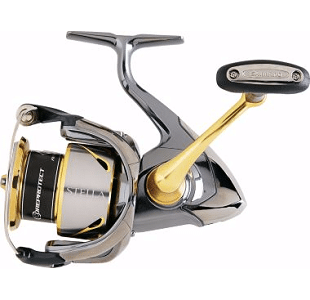
They are packed with high-end features, including unique grip designs and the X-Ship drivetrain system which lowers the force required to crank the reel. This helps improve the sensitivity of the reel, enabling you to detect even the lightest bites.
The reel’s altered center of gravity helps reduce fatigue, while the polished gears and 14-bearing (13+1) system ensure smooth operation. However, all of this incredible quality comes at a price.
There are four models in the Shimano Stella Series:
- STL1000FJ – weighs 6 ounces, features a 5.1:1 gear ratio and retrieves 25 inches of line per handle turn.
- STL2500HGFJ – weighs 7.2 ounces, has a 6.0:1 gear ratio and retrieves 35 inches of line per handle turn.
- STLC3000XGFJ – weighs 7.4 ounces, has a 6.4:1 gear ratio and retrieves 37 inches of line per handle turn.
- STL4000XGFJ – weighs 9 ounces, has a 6.2:1 gear ratio and collects 40 inches of line per handle turn.
5. Best Spinning Reel for Bass: Shimano Stradic CI4+
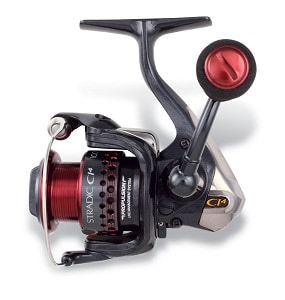
It’s also stronger and 20% lighter than the graphite material Shimano uses in many of their other reels. And while we recommend using this reel for bass fishing, it is impervious to rust and ready for saltwater fishing trips too.
The Stradic CI4+ also features X-ship gearing, which not only extends the life of your gears but allows you to crank with 20% more power as well.
It features a waterproof drag system to prevent snapped lines and help you battle big bass, and the machined aluminum handle comes with an EVA grip so that your hand will never slip off while reeling.
6. Best Reel Under $100: Shimano Spirex
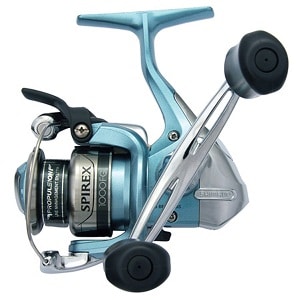
It also comes with a built-in propulsion feature, which helps to extend your casting range, while simultaneously helping to prevent backlash and line twist.
Also, unlike some other low-cost fishing reels, the Shimano Spirex is built to last, and it features a cold-forged aluminum spool and a graphite rotor and side plate for improved durability.
The Shimano Spirex comes in three different models:
- The Spirex 1000, which features a 6.2:1 gear ratio, retrieves 28 inches per crank and weighs 9.9 ounces.
- The Spirex 2500, which features a 6.2:1 gear ratio, retrieves 33 inches per crank and weighs 11.3 ounces.
- The Spirex 4000, which features a 5.7:1 gear ratio, retrieves 33 inches per crank and weighs 14.5 ounces.
7. Best Spinning Reel for Catfish: PENN Spinfisher VI Live Liner
PENN first introduced its now-famous line of spinning reels over 50 years ago. Now, the sixth generation offers improved performance and a live liner feature for bait anglers.
The additional rear drag allows bait users to independently adjust tension, fine-tuning the resistance the fish feels during the pickup. This live liner feature automatically turns off with a turn of the handle, allowing you to switch to fighting mode without doing anything extra.
The Spinfisher IV offers the live liner feature on four different size reels: 2500, 4500, 6500 and 8500. Each model features a full-metal body, IPX5 seals, CNC gear technology, HT-100 carbon fiber drag washers, heavy-duty bail wire, and a stainless steel ball-bearing system.
PROS
- Multiple sizes are available, so you can use the same reel design for all your setups
- Live line feature allows for better control of live bait without the need to do anything but turn the handle when it is time to fight a fish
- Lull-metal body paired with improved IPX5 seals provides even better protection from water, salt and sand
- Large spool with line markings makes for easy loading
CONS
- The black paint looks good but is prone to flaking
- The bail arms loosen over time. Luckily, they’re easy to tighten
Live-bait anglers will enjoy the combination of PENN’s time-tested design backed by modern improvements, making this the perfect choice for saltwater applications. From surf to offshore fishing, there is a size perfect for what you are chasing.
8. Most Expensive Spinning Reel: Shimano Stella STL 30000 SWB
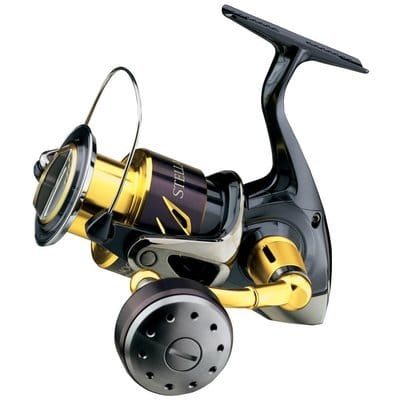
However, you’ll get plenty of reel for your money if you decide to go with the Stella STL 30000 SWB.
It features a rugged and rigid frame to stand up to the biggest fish, yet you’ll still enjoy silky smooth casts and retrieves, thanks to the high-quality components included in the design.
This includes Shimano’s X-Rigid Rotor, X-Rigid Bail and X-Rigid Handle.
It also comes with Shimano’s X-Rigid Drag System, which is tough enough to handle the biggest fish, yet smooth enough to avoid locking up when you need it most.
9. Best Long-Cast Spinning Reel: PENN Spinfisher VI Long Cast
PENN took one of the most recognized saltwater spinning reel designs, upgraded it with modern components, and added a longer, shallower spool. The result is a workhorse reel that will handle anything you or the fish throw at it while still making long, accurate casts seem easy.
As with the rest of the Spinfisher series, these reels feature a full-metal body, CNC gear technology, IPX5 spool seals, sealed HT-100 carbon fiber drag system, and the Superline spool.
The Long Cast models include a longer, shallower spool that reduces the angler of resistance as the line leaves the spool and adds distance to the cast. They’re available in three sizes: 5500, 6500, and 7500.
PROS
- Superspool includes a rubber gasket that eliminates the need for backing when using braid
- Improved seal system provides better protection from water, salt and sand
- The 4500 and 6500 sizes are available without a bail
- Full range of sizes for all your surf fishing applications
CONS
- Black paint tends to flake off
- Although changing the handle from left to right is easy, the cover for the unused port is tiny and easily lost
If you are a surf angler looking for a tough, time-tested design available in sizes that will meet all your fishing needs you owe it to yourself to check out the Spinfisher VI Long Cast Spinning Reel by PENN.
10. Best Spinning Reel for Crankbaits: PENN BTLII6000 Battle II
If you are heading out to fish crankbaits all afternoon, you’ll want a high-speed reel to make sure you can get your lures down to the target depth quickly and easily. The PENN BTLII6000 Battle II allows you to do exactly that, thanks to its 5.6: 1 gear ratio and impressive 41-inch per crank line retrieval rate.
This reel also provides a lot of line capacity, and it’ll hold up to 490 yards of 30-pound-test braided line.
11. Best Spinning Reel for Trout: Abu Garcia Revo 2SX10
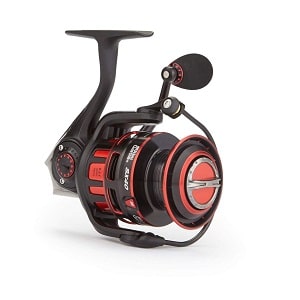
The Revo 2SX10 is built to the same standards as most other Abu Garcia reels, and it features a ton of high-end options, including a 9-bearing system, carbon matrix hybrid drag and X-Craftic gearbox.
12. Best Spinning Reel for Salmon: Shimano Exsence Spinning Reel
You can’t just catch big salmon with any old reel; you need one that will work smoothly enough to allow you to detect subtle bites while drift fishing, yet still provide enough power and rigidity to handle the heavyweight hooksets you’ll need to use to catch these fish.
Fortunately, the Exsence Spinning Reel includes all of the features salmon anglers need, including a Hagane Body, 12-bearing system and Shimano’s signature MGL Rotor.
13. Best Baitfeeder Spinning Reel: Shimano Baitrunner D Spinning Reel
It takes a bit of finesse and skill to be able to use live bait to consistently catch fish, but the dual drag system included with baitfeeder-style reel will make it much easier to do so.
But unlike cheap dual-drag systems included with many low-cost reels, the Shimano Baitrunner D features a very high-quality dual-drag system, which will make it easy to let big fish swim off with the bait, until you’re ready to engage the primary drag and set the hook.
The Baitrunner D Spinning Reel also allows you to get hooked fish back to the boat quickly, thanks to its 36-inch per crank retrieval rate.
Spinning Reel Considerations: What Do You Look for and Why?
Whenever you are picking out a spinning reel, you want to make sure you choose a unit that has the features and characteristics you need to fish successfully. Some of the most important considerations include:
External Parts
Open face reels are simple devices and most consist of only eight basic external parts and a number of internal components that allow it to function.
Spool
The spool holds the fishing line. The spool of spinning reels is fixed and does not rotate when the line is collected. However, it does turn backward when line tension exceeds the drag setting, allowing the line to unwind.
It also moves up and down as the handle is turned to ensure the line is wrapped evenly around it.
While the spool is a straightforward component, it can have a significant impact on the function of the reel – particularly as it relates to casting. Generally speaking, the easier the line comes off the spool, the farther you are be able to cast.
Some manufacturers alter the profile of their spools to help accomplish this. For example, many spools designed to maximize casting distance are longer, yet shallower which makes it easy for the line to pour off the spool.
Most spools are made from either aluminum or graphite. Opt for the former if you value durability but the latter if you are trying to keep the reel’s weight as low as possible.
If you like to use braided lines, go with a reel that has a braid-ready spool so that you can tie your line directly to the spool.
Reel Body
The reel body serves as the base and it is the part to which most of the other reel components attach. It must fit your hand and fishing style comfortably, but it must also serve as a stable base for the rest of the reel.
Like spools, most reel bodies are made from either aluminum or graphite. Once again, aluminum reel bodies are better for those interested in durability while graphite reel bodies are better for those who want the lightest gear possible.
However, some manufactures drill out holes within aluminum reel bodies to help reduce the weight. Just be sure that these cut-outs do not cause the reel body to flex – you want the body to be as sturdy as an anvil.
Reel Foot
The reel foot is the anchor which keeps the reel attached to the rod. Typically, the foot forms a flanged base which fits into a slot on the rod. The rod handle is then screwed tight which locks the reel into place.
Since most reel feet are simply extensions of the reel body, they are made from the same material.
You don’t have to worry very much about the reel foot when selecting a reel but it should be durable, fits well into the reel seat and holds the reel securely. Fortunately, most modern reels meet these criteria.
Reel Handle
The handle enables the angler to collect fishing line or reel in fish. Most handles are made from either graphite, aluminum or plastic, and they consist of an angled arm and a small, spinning grip.
Different manufacturers use different grip designs but there aren’t any “right” or “wrong” choices here – just be sure to pick a grip style that feels good in your hand.
Reel handles also differ in size. Some feature bigger, beefier grips and arms while others are smaller and lighter.
You should always keep weight in mind, it is usually preferable to select larger handles when possible as these can handle the stresses of fishing better and they are easier to grip quickly when need be.
Bail
The bail is a bent wire arm and metal or plastic frame which encircles the spool. It can be moved into either the “open” or “closed” position.
When open, the line can flow freely from the spool; when closed, the line can be retrieved by turning the reel handle which causes the bail to spin around the spool, wrapping the line around it as it progresses.
Most bails are relatively similar, given their simple design and function. Generally, you only want the bail to be strong with a smooth, polished surface.
Some reels feature an easy-close bail function which is highly desirable as it makes it easier to manually close the bail after casting (cranking the handle to close the bail can damage your reel over time).
Note that a few reel manufacturers produce bail-less designs which are most common on reels intended for fishing from the surf. They work by routing the line directly to the roller, rather than relying on the bail to do so.
Power Roller
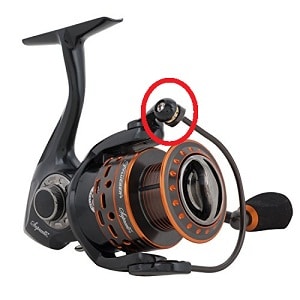
Most high-end rollers feature an internal bearing which allows the roller to spin. Rollers made of metal are better suited for braided lines which may cut into rollers made of softer materials.
No matter what materials and construction techniques used to produce a roller, the most important thing is that it spins smoothly and easily, instead of sticking at various points.
This is not a problem when purchasing intermediate- or high-end reels, as these usually feature rollers that offer problem-free performance.
Drag Adjustment
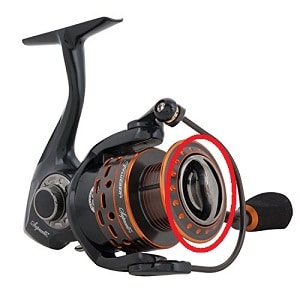
The tension should typically be adjusted so that the line is pulled from the reel with slightly less force than is required to break the line – this prevents the line from snapping during battles with big fish.
Note that drag adjustment dials can be located on the front or back of the reel. Though drag adjustment dials located on the back are easier to adjust while battling fish, front drag adjustment knobs are preferable.
They feature fewer parts than rear drag systems do, and they are also easier to disassemble and maintain. Many anglers feel that front drag systems offer smoother performance and more precise control over the drag than rear ones do.
You may not even have to worry about the differences between front and rear drag systems, as most high-end reels are only available in front-drag configurations.
Anti-Reverse Switch
The anti-reverse switch, when engaged, prevents the reel handle and bail from spinning backward. This helps ensure your hook-sets are rock solid and allows the drag system to feed line to the fighting fish.
When the anti-reverse switch is turned to the off position, the reel handle can be cranked in either direction. This gives the angler the option of reverse reeling when a fish takes off, rather than relying on the drag system.
Some anglers simply prefer to reverse reel rather than depend on the drag. Many fishers used to do so because the drag systems on older reels didn’t always work very well.
Most modern reels, particularly high-end models, feature very smooth drag systems which work better than reverse reeling for battling big fish. In fact, many of the better reels available on the market no longer feature anti-reverse switches.
Internal Parts
Internally, spinning reels contain a variety of gears, bearings, and connectors that make the magic happen. Because spinning reel designs often differ significantly, it is hard to make apples-to-apples comparisons of its internal components.
However, there are a few important aspects that demand your attention:
-
-
- gear ratio
- number of bearings
- type of bearings
-
Gear Ratio
Usually expressed as a numerical ratio (such as 4:1 or 5:1), gear ratio refers to the number of times the bail arm spins for each turn of the handle.
Higher ratios allow you to retrieve line more quickly but lower gear ratios provide more torque as you crank the handle. Typically, reels in the 4:1 range is considered “slow” while those in the 6:1 range are considered “fast.”
Bearings

Bearings are another important consideration and they can significantly influence the function of a reel. They are rotating metal or ceramic rings with metal or ceramic balls inside to help reduce friction as the bail arm turns.
When comparing reels with same bearings, the one with more bearings can produce smoother action while a reel with higher-quality bearings almost always outperform a reel with more but lower quality bearings.
Most modern reels (particularly entry-level and intermediate models) feature steel bearings but some of the high-end reels available now use ceramic bearings which provide even smoother operation and are better protected from saltwater and debris.
Shimano and Daiwa both make their versions of these ceramic bearings, calling them ARB bearings and CRBB bearings respectively.
Weight
If you have arms of steel, you don’t have to worry much about the weight of the reel. But most mortals appreciate using a reel that doesn’t tire their arm quickly and allows them to fish all day long.
Reels come in different sizes to suit various fishing situations and target species. Accordingly, this is usually the single most influential factor in a reel’s weight. However, within any given size, class, reel weights can vary quite a bit.
Body Material and Construction
The materials and construction techniques used to produce a spinning reel must be both strong enough to stand up to big fish, as well as light enough to prevent angler fatigue.
Manufacturers do this in a variety of ways, including the use of space-age alloys that are both strong yet light and by removing portions of metal to help reduce the weight.
Modern reels can be made of:
-
-
- plastic
- graphite
- copolymer
- metal
-
Plastic is only appropriate for young anglers and budget-limited anglers who are pursuing small, freshwater fish such as bluegill and river trout.
Graphite and copolymer are more resilient and work in most freshwater and light saltwater fishing applications. However, metal construction is the preferred choice for serious anglers for fishing both fresh and saltwater.
Note that some reels are made from a few different materials to help reduce weight and costs. However, these types are only as durable as their weakest material so be sure to note the materials used in any reel carefully before making a purchase.
Line Capacity
Large reels can hold more line than smaller ones but, as with weight, there are lots of variation among the models in a given size class. Apparently, the line diameter used also influences a spool’s capacity.
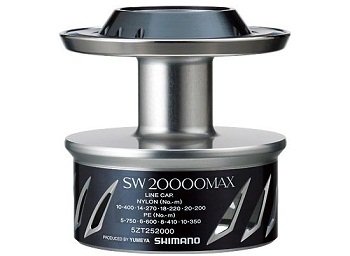
For example, a reel may hold 200 yards of 2-pound-test line or 100 yards of 6-pound-test line. In most cases, these line capacities are printed or stamped onto the spool or reel.
You need to determine the line diameter and spool capacity that will work for your target species.
Generally speaking, smaller game fish – bluegill, crappie, perch, and others – will only require light-weight lines and modest line capacities; after all, these fish don’t run very far once hooked.
On the other hand, larger fish – muskies, striped bass, marlins and others – will require heavier lines and generous spool capacities to accommodate the lengthy runs these fish take after snatching a lure.
Drag System
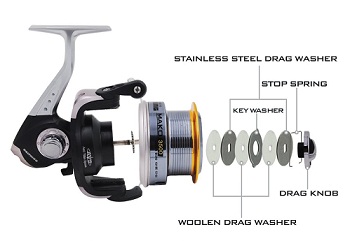
Some reels indicate the amount of drag pressure they can withstand – typically characterized as the “maximum drag pressure”.
Usually, 10 pounds of drag pressure is more than enough to deal with all but the largest bass or trout while larger fish may require a reel capable of standing up to 20 pounds of pressure.
Many reels have ratings that exceed these but in practice, your arms are unlikely to be able to keep up with the 40- or 50-pound ratings some reels boast.
-
-
- High-quality reels feature silky smooth drags which do not vary in their pressure and operate quietly.
- Low-quality reels typically allow the line to be drawn out in a jerky, stop-and-start fashion.
-
The former will allow you to catch even the biggest fish all day long without causing you any problems, while the latter will often stop abruptly during battles which often results in a snapped line and lost fish.
Drag quality is often closely tied to overall reel quality, and you’re going to get what you pay for.
Consider How You Fish Too!
In addition to technical details like drag systems and line capacities, you also want to select an open face reel that suits your overall fishing strategy, habits, and desires.
Salt or Fresh Water
You can use just about any spinning reel for freshwater but you need a higher-quality reel designed to resist the corrosive effects of salt water to fish for marine species.
Most saltwater reels accomplish this by using rust-resistant materials and tight-fitting gaskets and seals to keep the saltwater out. Due to the additional features required in their construction, they are usually more expensive than freshwater spinning reels.
Species
You should identify those species you wish to pursue before selecting a spinning reel as different species attain different sizes and behave differently once hooked.
For example, you want a very lightweight spinning reel designed for 4- to 6-pound-test lines and 1/8- to ¼-ounce lures if you like to pursue panfish and crappie.
On the other hand, anglers pursuing bass or walleye need to use 8- or 10-pound test line so they may want to opt for a heavier weight spinning reel.
You should also consider the line capacity of a spinning reel when picking a model.
-
-
- Anglers fishing for panfish, crappie or rainbow trout won’t need a ton of line capacity as these species rarely engage in lake-crossing runs.
- You need a reel with a much higher spool capacity if you are targeting large species or those who tend to make several-hundred-yard runs after being hooked.
-
While spinning reels are made in large enough sizes to work well for just about any freshwater fish you could catch, as well as most moderately sized saltwater species, you may have trouble finding one built to withstand the kind of punishment from large sharks, blue marlin and other saltwater behemoths, who may travel hundreds of yards after biting your lure.
In such cases, you’ll need to look for a conventional (baitcasting) saltwater reel.
Line Preferences
You want to consider the type of line you like to use when selecting a spinning reel. This is primarily a concern for anglers who like to use braided lines as most reels work very well with monofilament and fluorocarbon lines.
Braided lines may cut into the spool of some reels (particularly those made with inferior materials) and they can slip into gaps on some reel designs, causing big problems.
Fortunately, most manufacturers who produce reels that are compatible with braided lines state as much on their product literature and marketing materials. So just review these items carefully before making your selection.
Left-Handed, Right-Handed or Reversible?
Anglers usually prefer reeling with one hand instead of the other, so always be sure to select a reel that has the orientation you prefer. Most right-handed anglers prefer to crank spinning reels with their left hand while left-handed fishers prefer the opposite.
However, there is nothing wrong with pursuing the opposite arrangement. Some reels are designed to work with either hand which can provide additional flexibility.
If you’ve never fished before, it is probably wisest to learn to crank with your left hand as most spinning reels are manufactured for left-handed reeling.
Matching Your Reel to the Rod
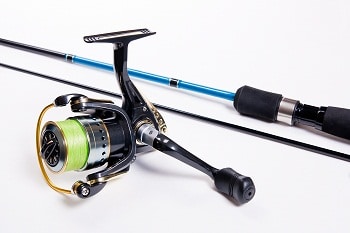
This means not only ensuring you match a spinning reel with the right type of rod, but also matching it with a rod that has compatible specifications.
Spinning reels are designed to be used with spinning rods which have a number of features that differ from some other rods. For example, unlike baitcasting or spincasting rods, the line guides of a spinning rod are designed to hang on the rod while in use.
Additionally, spinning rods have larger guides near the reel than these other rod types do as the line pouring off of a spinning reel creates large arcs which would not easily pass through the relatively small guides of these other rod types.
You also need to ensure that your reel and rod are designed for similar line weights.
Most fishing rods have recommended line (and lure) weights printed near the handle. You should use a reel that has a similar recommended line weight to avoid technical problems and poor performance.
Do You Want a Warranty?
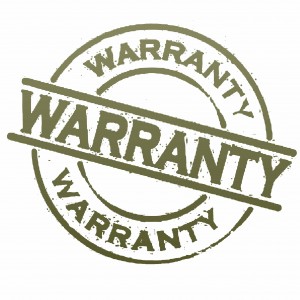
Although warranties vary and it is difficult to make sweeping generalizations, it usually makes sense to buy a warranty for any reel that costs you more than $75 or so.
Otherwise, you are better off saving the money you’d spend on the warranty and just put it aside to help fund the purchase a replacement, should this one break.
Ergonomics
A final consideration – an entirely subjective one, at that – is the way the reel feels in your hand.
You’ll simply like the way some reels feel more than others. Unfortunately, it is impossible to determine the way a reel feels when shopping online but you can consult reviews of previous customers to glean a bit of insight on the feel of the reel.
Leading Spinning Reel Brands
There are some dominant brands in the spinning reel category. While there are smaller manufacturers who produce a few models, those big brands produce the bulk of your choices.
Each major brand tends to have different strengths and weaknesses and brand-wide tendencies with which you may want to familiarize yourself.
Shimano
Shimano is a huge company, headquartered in Japan, which produces a broad range of products including bicycles, rowing equipment, golf supplies and fishing reels.
With a lineup that includes 19 different reel series, they try to produce reels to suit just about any angler’s needs — whether you fish saltwater or freshwater, or you target tiny fish or giants.
This includes reels designed to work well for beginning anglers as well as some of the most impressive (and expensive) reels on the market such as the Stella line referenced above.
It is hard to characterize Shimano’s reel collection, thanks in part to the sheer number of different reels they produce, but most anglers find that they produce a reel that includes the features they seek.
Some of the features that are common to most Shimano reels include the G-Free Body reel design which moves the reel’s center of gravity closer to your hand, thereby making it easier to use for extended periods of time without fatiguing.
Several Shimano reels also feature the X-Protect system which is comprised of a waterproof coating and a water-channeling design. Both features combine to help protect the internal reel mechanisms from salt water and sand.
Penn
Penn is an American reel and rod manufacturer who produces different spinning reels ranging from entry-level to their top-of-the-line Torque II series which is one of the toughest reels on the market.
Primarily designed for saltwater anglers, Penn packs their reels with most of the features you’d want in a fishing reel including their patented Dura-Drag system which provides one of the best drag functions among all reels.
Many of their reels also come with line capacity rings printed on the spool. These rings allow you to determine how much line is on your spool at a glance.
Penn’s Slammer series is another great option from Penn’s product line. A formerly discontinued line, these were brought back to quench incredible customer demand.
These reels – like several other in Penn’s product lineup – feature the IPX6 sealed body and spool design which makes them well-suited for saltwater anglers.
And for those who are looking for even more salt-water protection, the Spinfisher line features a water-tight design to prevent corrosion.
Abu Garcia
Abu Garcia is a well-known and beloved brand among most modern anglers. Originally founded in Sweden in 1921, this company (which is now headquartered in the USA) has introduced some significant innovations to the spinning reel market.
For example, several of their modern reel designs feature the Rocket Line Management System and the Rocket Spool Lip Design which combine to provide improved casting distance and line control.
Their trademarked Carbon Matrix Drag System is also widely praised by anglers, thanks to its smooth operation and dependability.
While most of Abu Garcia’s reels are designed for the mid- or high-level angler, they also offer a budget line. Apparently, their budget reels do not possess a number of the high-end features that their higher-quality reels do.
But it gives cash-strapped buyers a chance to fish with an Abu Garcia reel without spending a ton of money.
Abu Garcia makes reels for both fresh and saltwater fishing. Most of their models come in several sizes so you can match your reel to the species you like to catch.
Daiwa
Daiwa has been making fishing equipment, including spinning reels, since 1955. Now headquartered in Cypress, California, the company produces several high-quality reels for intermediate and advanced anglers and a series that is suited for a beginning angler.
Several Daiwa reels feature the Twist Buster TM roller system which helps reduce line twist and some are made from a high-density carbon material which is both lighter and stronger than the carbon that other manufacturers use in their reels.
Daiwa’s top-of-the-line offering is the Certate series. Featuring aluminum construction, Digigear gears and components and nine bearings to guarantee smooth operation, the Cerate Series is excellent for battling big fish.
Even their budget-priced line includes some high-end features such as a waterproof Carbon ATD drag system, an aluminum handle, and a braid-ready spool.
Share Your Thoughts
Do you have a spinning reel brand or model that you love to use? What about a brand or model that failed to hold up the way you wanted? We’d love to hear about your experiences and recommendations in the comments below.
If you are also looking for a rod to pair it with your new reel take a look at our fishing rod buyer guide.


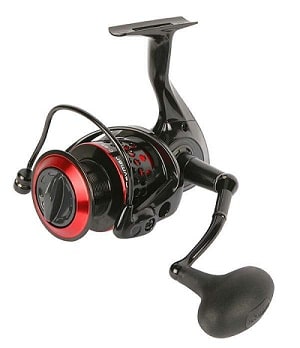
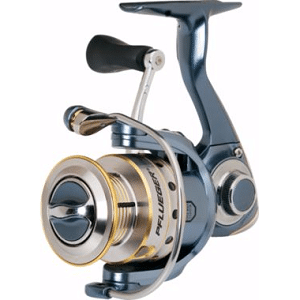
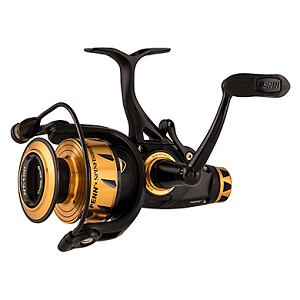

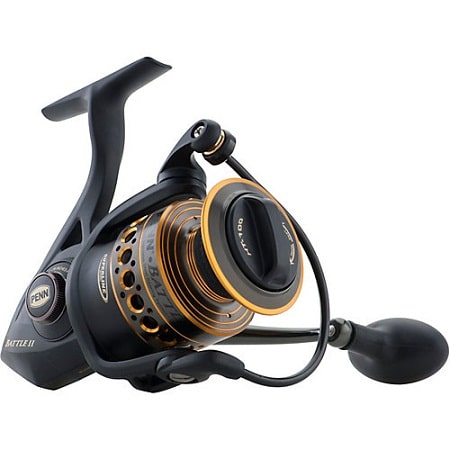
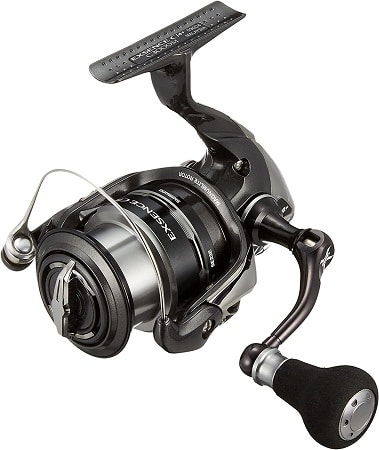
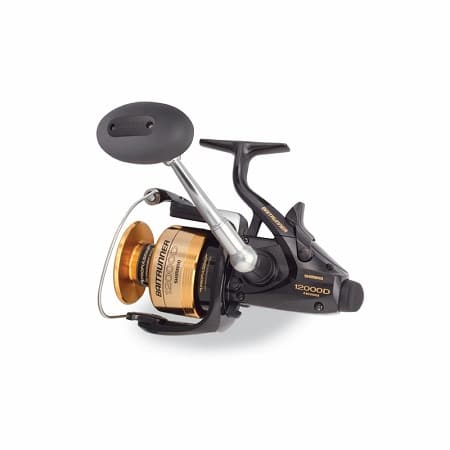

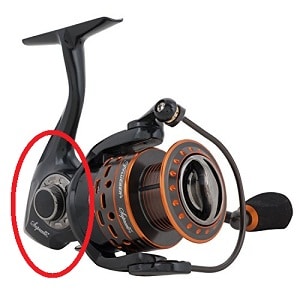
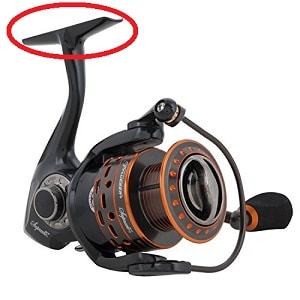

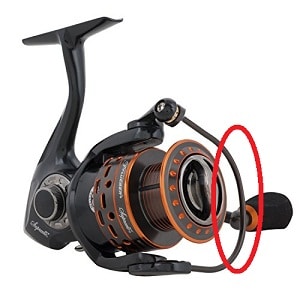
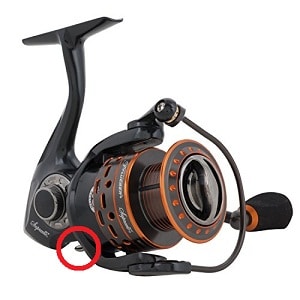
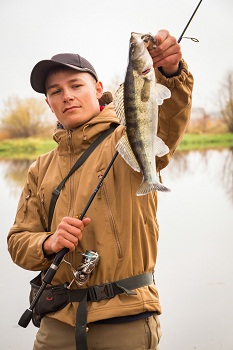

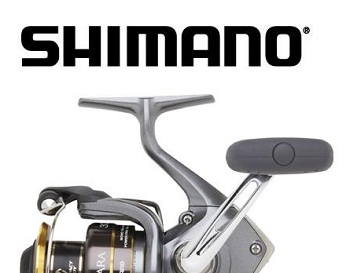
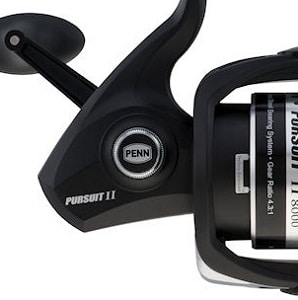
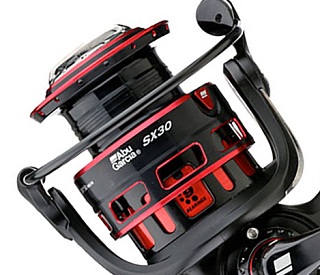
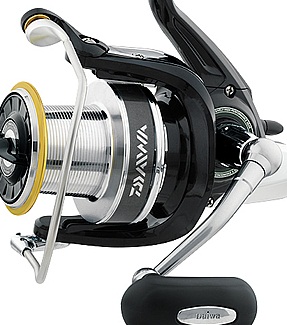

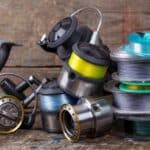
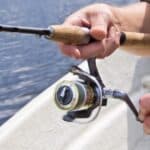
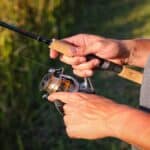
Comments are closed.